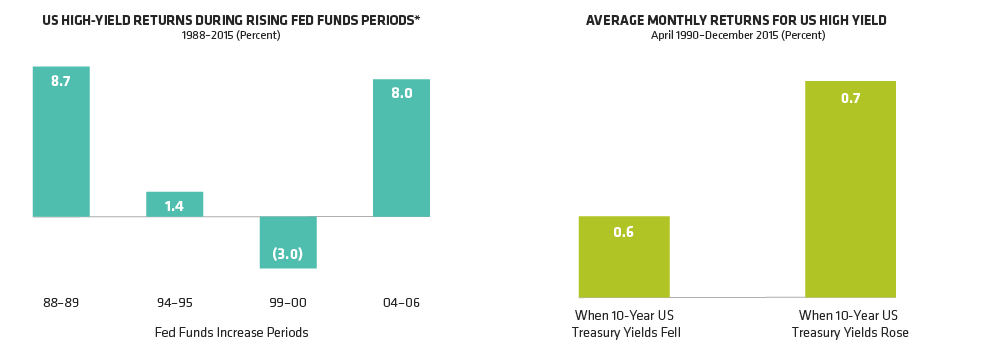-
The views expressed herein do not constitute research, investment advice or trade recommendations and do not necessarily represent the views of all AB portfolio-management teams.
Why Rising Rates Are Good for High-Yield Credit
Nov 30, 2016
3 min read
US High Yield: Taking Fed Tightening in Stride

Historical analysis does not guarantee future results.
Through December 31, 2015
US high yield is represented by Bloomberg Barclays US High-Yield Corporate; US Treasuries by Bloomberg Barclays 10-Year US Treasury Bellwether.
*Rising fed funds periods represented by April 1988–February 1989, February 1994–February 1995, July 1999–May 2000 and July 2004–July 2006
Source: Bloomberg Barclays and AB
About the Author